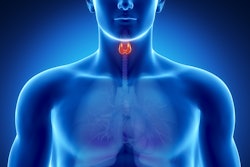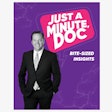As I was reviewing postoperative instructions with my patient after her extraction, she casually mentioned that she'd been taking "water pills" along with her blood pressure medication. My pen stopped mid-sentence.
Here was a patient on lisinopril and hydrochlorothiazide, and I was about to send her home with ibuprofen for pain management. What seemed like routine post-op care had just become a potential recipe for an acute kidney injury (AKI).
 Dr. Lisa Chan.
Dr. Lisa Chan.
This scenario plays out in dental offices nationwide, often without recognition of the dangerous drug interaction at play. With nearly half of U.S. adults managing hypertension and nonsteroidal anti-inflammatory drugs (NSAIDs) being our go-to recommendation for dental pain, understanding this critical interaction isn't optional. Knowing about drug interactions is essential for patient safety and can be quickly accessed using trusted sources such as MedAssent DDS.
Why this combination spells trouble
The interaction between NSAIDs, angiotensin-converting enzyme (ACE) inhibitors and/or angiotensin II receptor blockers (ARBs), and diuretics creates what nephrologists call the "triple whammy," a perfect storm that can lead to acute renal failure. Here's how each medication affects kidney function:
NSAIDs work by inhibiting cyclooxygenase enzymes, which block prostaglandin synthesis. While this reduces inflammation and pain, it also constricts the afferent arteriole in the kidney, reducing blood flow to the glomerulus and decreasing filtration.
ACE inhibitors (e.g., lisinopril, enalapril) and ARBs (e.g,. losartan, valsartan) dilate the efferent arteriole by blocking the renin-angiotensin system, which normally constricts this vessel to maintain filtration pressure.
Diuretics, particularly thiazides like hydrochlorothiazide, reduce blood volume and can lead to dehydration, further compromising renal perfusion.
When combined, these mechanisms create a dangerous reduction in the glomerular filtration rate. The kidney loses its ability to maintain adequate blood flow and pressure for proper function, potentially leading to AKI within days of starting the combination.
The numbers don't lie
Research shows that patients on this triple combination face a significantly increased risk of AKI compared to those on dual therapy. This study also found that of those developing AKI from the "triple whammy," more than half (58.6%) were hospitalized as an emergency within seven days, and 13.9% died within 30 days (13 and 49 times more than controls, respectively), highlighting its clinical urgency. The risk is particularly elevated in:
- Patients over 60 years old
- Those with preexisting kidney disease
- Patients who are dehydrated (common after oral surgery)
- Individuals with diabetes or heart failure
What makes this especially concerning for dentists is that many of our patients don't realize they're on this combination. They might know they take "a blood pressure pill" but not distinguish between their ACE inhibitor and their diuretic, especially when both are combined in a single tablet like Prinzide or Hyzaar.
Red flags in your medical history review
During your medical history review, watch for the following medication combinations that should trigger caution.
Common ACE inhibitors
- Lisinopril (Prinivil, Zestril)
- Enalapril (Vasotec)
- Captopril (Capoten)
- Ramipril (Altace)
Common ARBs
- Losartan (Cozaar)
- Valsartan (Diovan)
- Irbesartan (Avapro)
- Olmesartan (Benicar)
Diuretics to watch
- Hydrochlorothiazide (HCTZ)
- Chlorthalidone
- Furosemide (Lasix)
- Spironolactone (Aldactone)
Clinical tip: Many patients take combination pills that aren't obvious. Prinzide contains both lisinopril and hydrochlorothiazide. Hyzaar combines losartan with hydrochlorothiazide. Always ask patients to bring their actual medication bottles or use a comprehensive drug resource such as MedAssent DDS.
Safe alternatives for pain management
When you identify a patient on this risky combination, don't panic, as you have excellent alternatives:
Acetaminophen (Tylenol) remains your safest first-line choice. It's effective for mild to moderate dental pain and doesn't affect renal function. The maximum dose is 3,000 to 4,000 mg daily for adults with normal liver function.
Topical anesthetics like benzocaine gels can provide localized relief without systemic effects.
Prescription alternatives, which include:
- Tramadol for moderate pain (must monitor for serotonin interactions)
- Short-term opioids when absolutely necessary
- Topical diclofenac gel (minimal systemic absorption)
If NSAIDs are absolutely necessary:
- Use the lowest effective dose for the shortest duration.
- Consider celecoxib, which may have less renal impact.
- Ensure adequate hydration.
- Consider collaborating with the patient's physician.
The dehydration factor
Post-operative dehydration significantly amplifies this risk. Patients who've been NPO before procedures, those with post-op nausea, or anyone not maintaining adequate fluid intake face increased vulnerability.
This is why timing matters. A patient who's been well hydrated and has normal kidney function might tolerate a few days of ibuprofen. But the same patient, dehydrated after a long extraction appointment, faces a much higher risk.
When to consult
Don't hesitate to reach out to the patient's physician or check a clinical support tool like MedAssent DDS when:
- Multiple medications suggest complex medical management.
- You're unsure about specific drug combinations.
- The patient has a history of kidney disease.
- You're considering NSAID therapy.
A quick lookup, phone call, or secure message can save your patient from a trip to the emergency room and you from a potential adverse outcome.
The bottom line
The combination of NSAIDs with ACE inhibitors/ARBs and diuretics represents one of the most clinically significant drug interactions we encounter in dentistry that many dentists don’t know about. Unlike some theoretical interactions found in reference books, this one has real-world consequences that can land patients in the hospital.
Your routine medication review isn't just about documenting what patients take, it's about recognizing when those medications change how you should treat dental pain. In an era where we're increasingly held accountable for comprehensive patient care, understanding these interactions is essential not just for good practice but also safe, effective treatment.
The next time you see lisinopril and hydrochlorothiazide on a medication list, remember the "triple whammy." That moment of recognition and the decision to choose acetaminophen over ibuprofen might be the difference between routine recovery and AKI. In dentistry, as in all of medicine, it's often what we don't prescribe that keeps our patients safe.
Dr. Lisa Chan has devoted her career to promoting equity in care in both dentistry and her community. She brings over 35 years of diverse experience in dentistry to her role. Chan received her Doctor of Dental Surgery degree from the University of Southern California Herman Ostrow School of Dentistry. Her background includes significant positions such as a hospital dentist at Kaiser Permanente, a private practice dentist in Los Angeles, and a consultant for the California State Dental Board. Chan co-founded MedAssent DDS with the mission of elevating patient safety through integrated care.
Aubrey Glassberg plays a vital role in content development and editorial review, ensuring that articles are both insightful and clinically relevant for dental professionals. In addition to her editorial work, Glassberg oversees various projects at MedAssent DDS, including the management of its comprehensive medication database, helping bridge the gap between dentistry and pharmacology.
The comments and observations expressed herein do not necessarily reflect the opinions of DrBicuspid.com, nor should they be construed as an endorsement or admonishment of any particular idea, vendor, or organization.



















